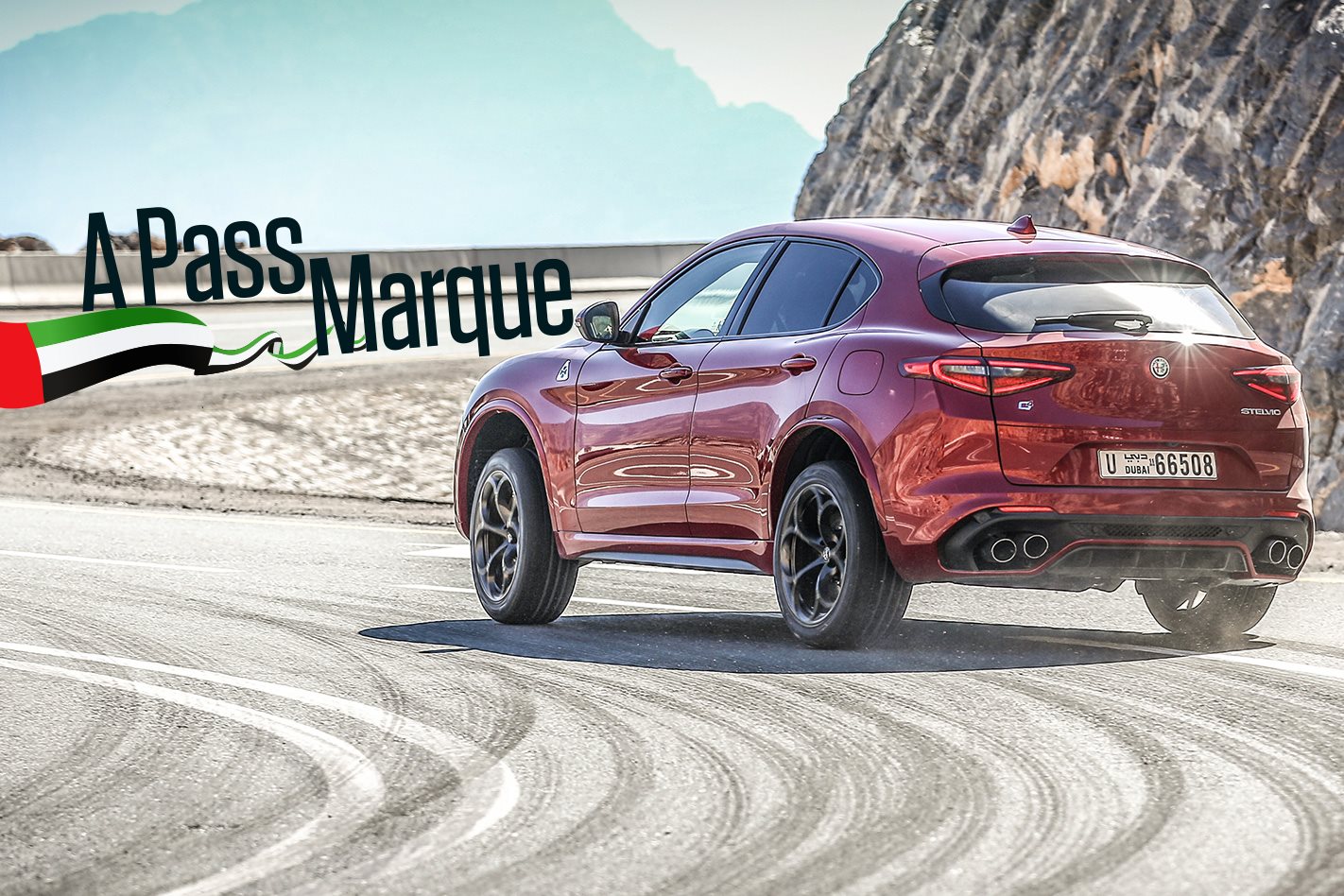IT’S NOT often I find myself imagining the sound my bottom must surely be making, but this is one of those rare moments.
Having just hopelessly overcooked a tight switchback in a moment of ham-fisted stupidity, the rear tyres of the Alfa Romeo Stelvio Q are now marching across the centre line with alarming determination, apparently in a rush to introduce themselves to an oncoming four-wheel drive that’s also doggedly – and inexplicably – glued to the middle of the road.
If that battered Toyota LandCruiser is the rock, just beyond it is a hard place. The Jebel Jais mountain road is bookended on one side by sheer rock, and nothingness on the other, with nought but a 1000m drop between you and the ground a Road Runner-cartoon-long way below.
There’s no help on the way, either. One of the greatest things about this go-fast Alfa Romeo Stelvio is also, in a situation like this, its scariest. Switched beyond Dynamic, Natural and Advanced Efficiency (DNA – snore) to its hardest and angriest Race setting, it feels as though every traction or stability aid is turned off. Trust the Italians to shrug and take a ‘you got yourself into this and you get yourself out’ approach.
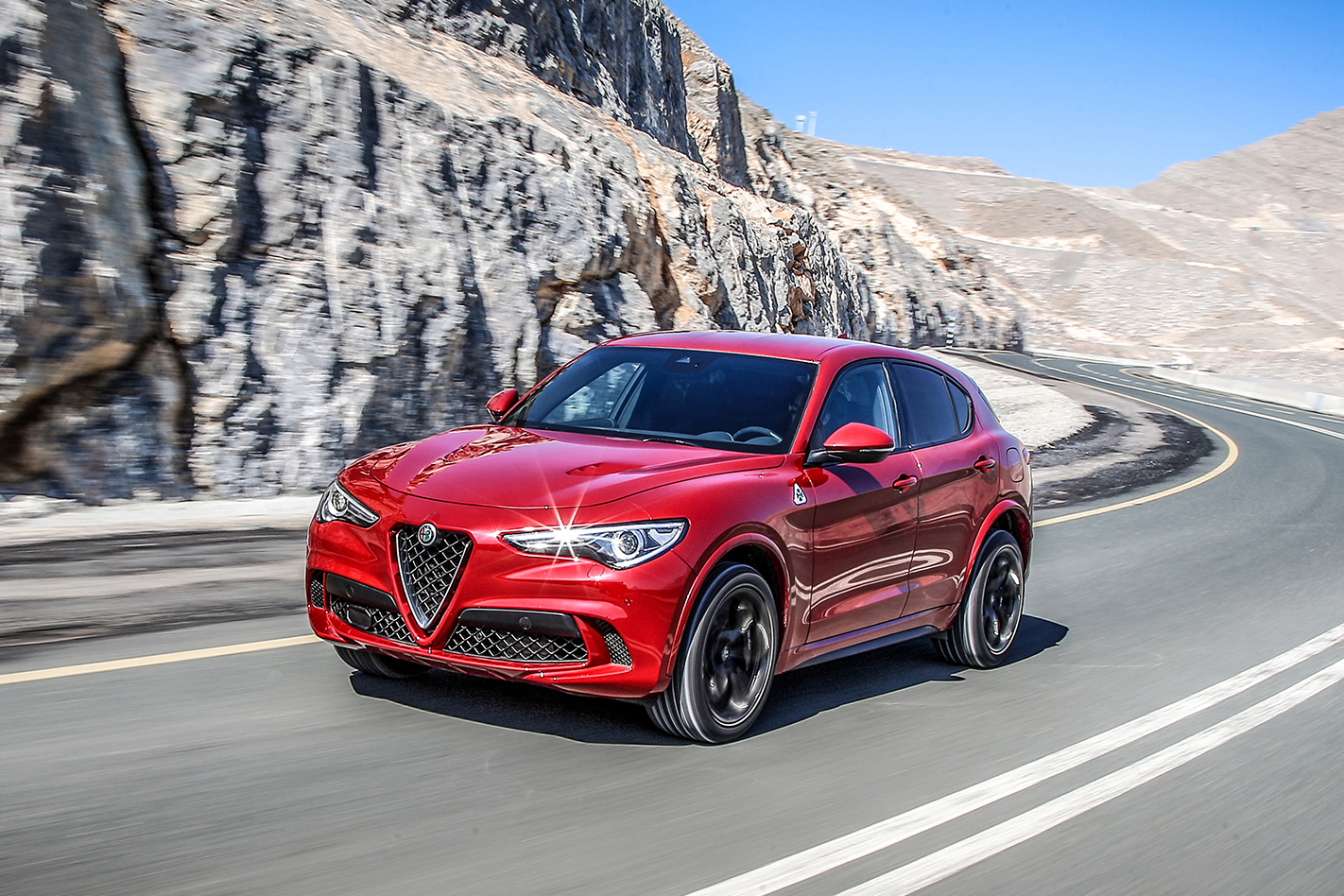
By the time I’d found the courage to open my eyes again, the Toyota hulk was gone. Had we been in Australia, my licence would have been dragged before the firing squad and put out of its misery. Here in the United Arab Emirates, though, where passengers take joy in skating alongside smoking sedans locked into huge high-speed drifts, it barely registers on the crazy-driving scale. Either way, the lesson had been learned: this is not a medium SUV to be trifled with.
It is also not one to be quickly understood. While the Stelvio sits on the same new Giorgio platform as the Alfa Romeo Giulia, the Italians – and in what might be the most Alfa Romeo thing of all time – suddenly grew tired of the whole Quadrifoglio Verde thing, despite having just glued that badge to the back of the flagship version of that sedan, so this range-topping SUV will simply be known as the Q.
And that comes after what would seem to be the most insanely hubristic of marketing moves in actually naming Alfa Romeo’s first-ever SUV after one of the world’s most iconic driving roads – the incredible Stelvio Pass that links Italy with Switzerland. Surely the Giulia QV would be a better candidate for such a regal title? Or maybe the brand’s incoming 5 Series competitor?
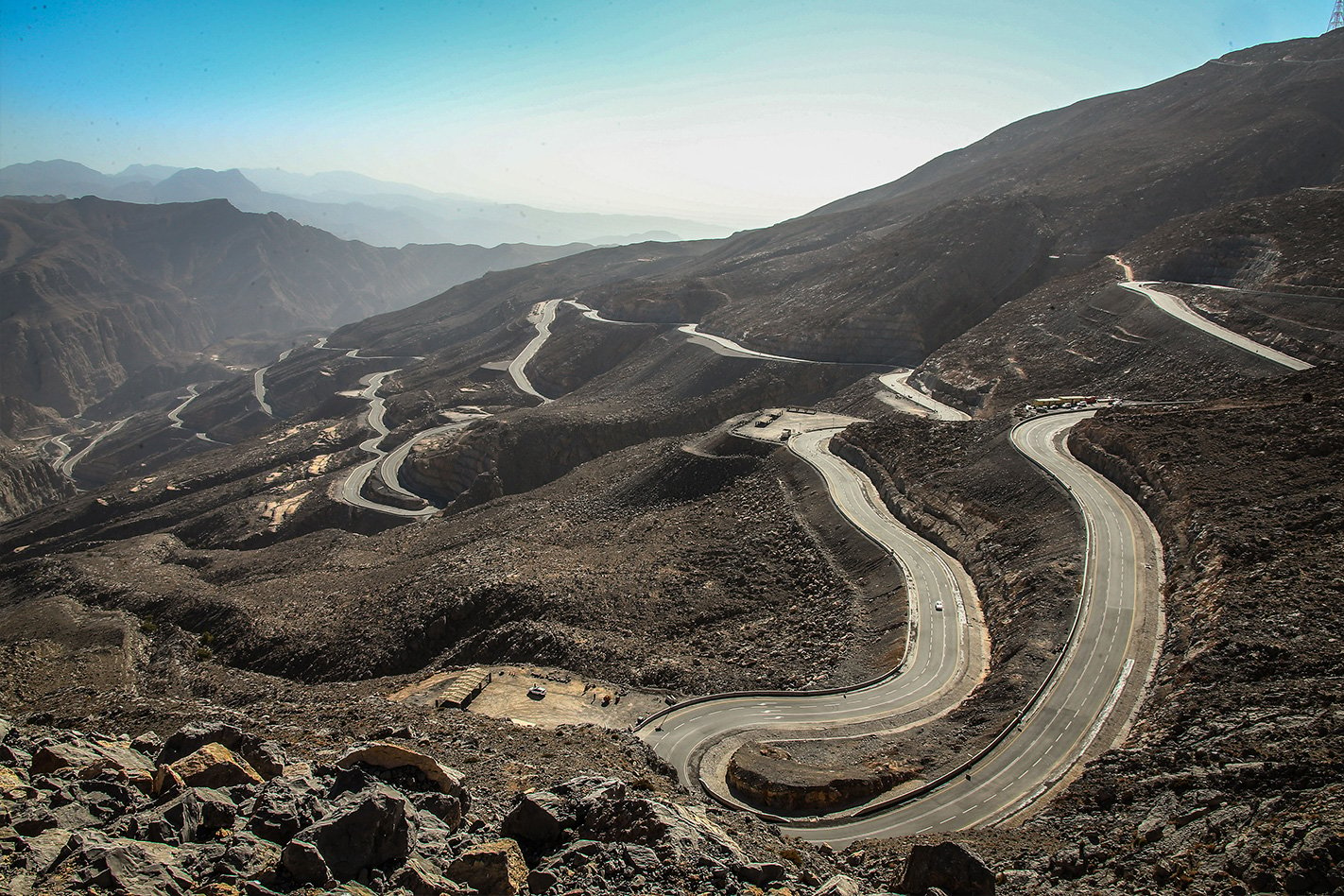
If any SUV was worthy of the challenge, this is it. Alfa’s SUV Q packs the same engine as sedan QV: a singing 2.9-litre bi-turbo V6 that is suspiciously similar to Ferrari’s turbocharged V8, just with two cylinders lopped off (although the brand denies the similarities, claiming the Alfa engine is a bespoke unit). And so this peach of an engine will serve up a thick and meaty 375kW and 600Nm, enough to push the Stelvio from standstill to 100km/h in 3.8 seconds – a whole six-tenths quicker than a Macan Turbo Performance Pack – and on to a top speed of 284km/h.
The outputs are all sent through an eight-speed ZF automatic and mostly to the rear tyres, although the Q4 all-wheel-drive system can shift up to half the grunt to the front axle when required. Alfa’s active torque vectoring (via dual clutch packs at the rear differential), adaptive dampers, and the five-mode drive programs that include the balls-to-the-wall Race setting complete a rather pretty picture.
And so, as you might expect, the Q is fast. But that in and of itself isn’t particularly impressive. Lots of things are fast, and I wouldn’t want to take a bullet train to a race track. Nope, what’s truly and staggeringly impressive about the Q is its ability to hide the fact that it is, in fact, any kind of SUV.
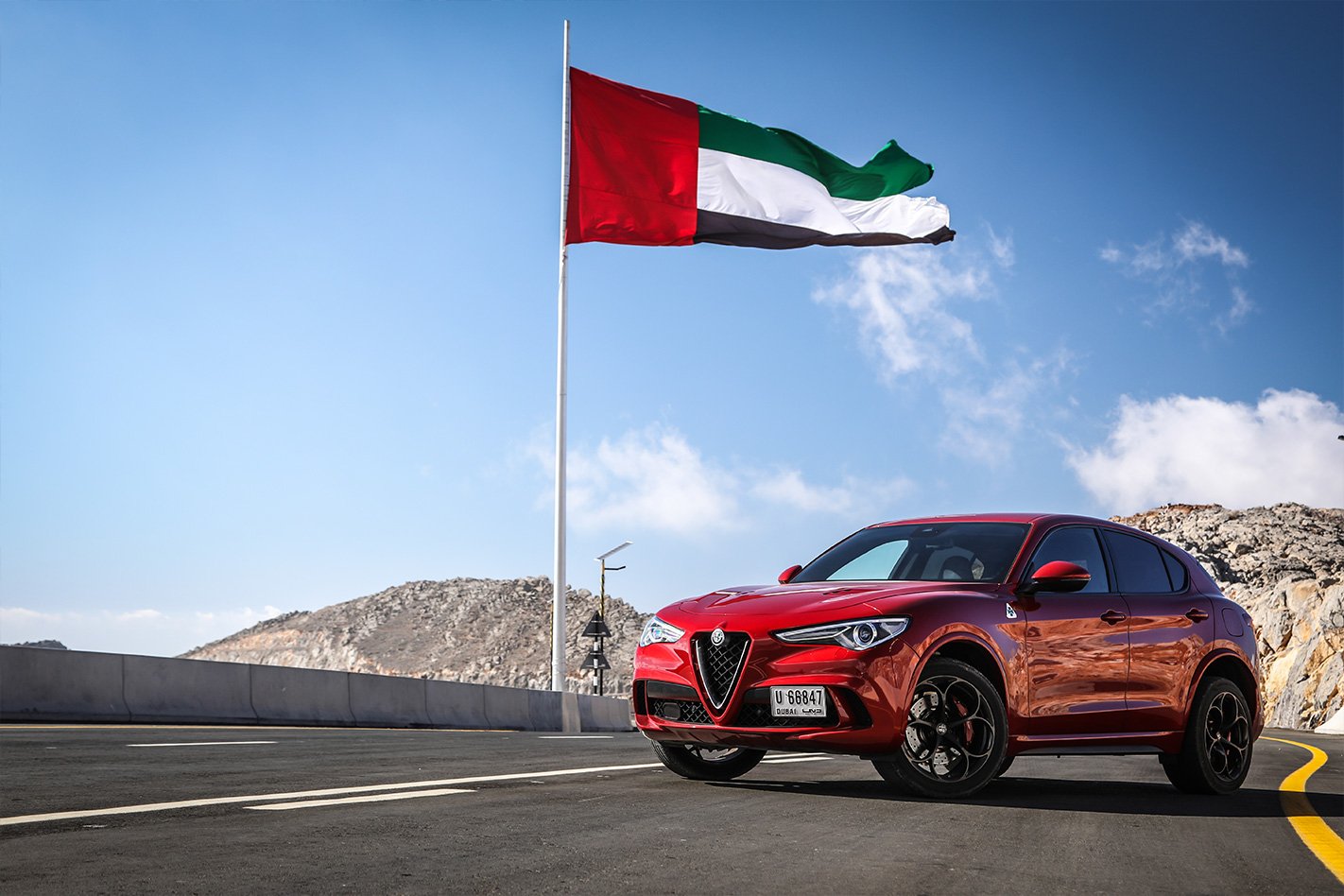
Imagine every great corner you’ve ever driven anywhere in the world – from the tightest hairpins to the fastest of sweepers – all crammed into one truly glorious 35km hillclimb and you’re getting close to the awesomeness of the Jebel Jais road. It might be the ugly sister of Europe’s famed mountain passes (like the, er, Stelvio…) with forested foothills and Sound of Music villages swapped out for dirt, shale and stray goats, but what it lacks in picturesque beauty it more than makes up for with silky smooth and happily un-policed tarmac that climbs like a vertical race track.
Bulk is the natural enemy of fun, but at 4702mm long the Stelvio Q is smaller than the class average, shorter nose-to-tail than the forthcoming Mercedes-AMG GLC63, and on par with the aforementioned Porsche. In the flesh it appears more like a pumped-up hatchback in its proportions; a sort-of beefier Mercedes-AMG GLA45. When combined with a liberal use of aluminium in its smaller body, the Stelvio Q’s kerb weight is also kept to a fairly reasonable 1830kg – 65kg under a Macan GTS and a whole 95kg under the faster Macan Turbo.

It’s the steering, though, that’s the most surprising. How Alfa Romeo has managed to create such a direct connection with the front tyres where others, including some genuine legends of the sports car game, haven’t been able to, is incredible. You feel acutely in touch with the road below, and rock-solid confident the car will go exactly where you want it to, exactly when you want it to.
Except in this instance we can’t go any further because, perhaps most amazingly, this road doesn’t actually go anywhere.

The idea, if you can believe it, was to build a winter wonderland at the top of the mountain (in a country in which temperatures rarely drop below 20 degrees, even in the coldest depths of winter) that would steal lucrative tourist dollars from nearby Dubai’s indoor ski field.
Up here, the lofty 1934-metre peak, is the only place in the UAE where it actually snows (yes, in winter the top can occasionally be crowned in white while the towns beneath it swelter) and the local government decided outdoor skiing trumps indoor every time.
Any ski resort is yet to materialise – perhaps unsurprisingly given that, road or no road, the Jebel Jais mountain remains in the Middle East – but that sits just fine for us and our Q chariot. Over the course of two days we might have seen 20 vehicles (including one, terrifying four-wheel drive).
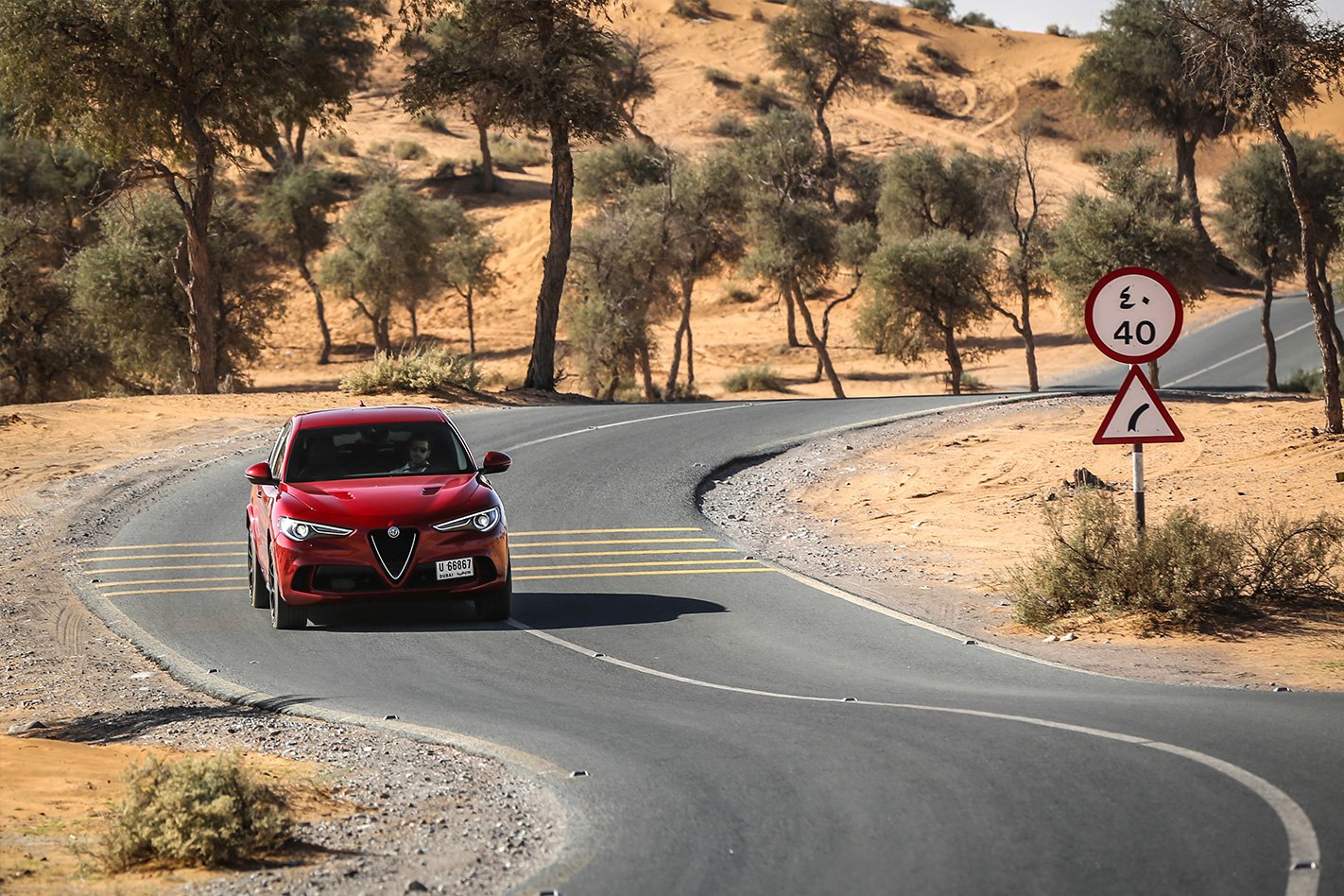
While this perfectly smooth, perfectly twisting and perfectly perfect roadway is the kind of road that would turn many an SUV to mush, the Stelvio Q stands tall here at the top. And as the Macan ages and other more mundane SUVs start cramming lofty neighbourhoods, the fastest first Alfa SUV is out on its own – or, at least until the GLC63 thunders in.
There are straight-line faster SUVs, I’m sure, especially all-electric ones, but what is so often lost in the blind pursuit of those numbers is the theatre of the drive, and the Stelvio Q shines on the right road, this road, not because of the way it storms between corners, but because of the way it behaves when it arrives at one.
It sits flat, holds a driving line like it’s been nailed to it and serves up more screaming feedback than a Gordon Ramsay restaurant review. Sure, it isn’t quite a hulking, smoking rear-driver like the Giulia QV is, but there’s still plenty of verve in this decidedly arse-driven all-wheel-drive Stelvio Q-without-the-V.
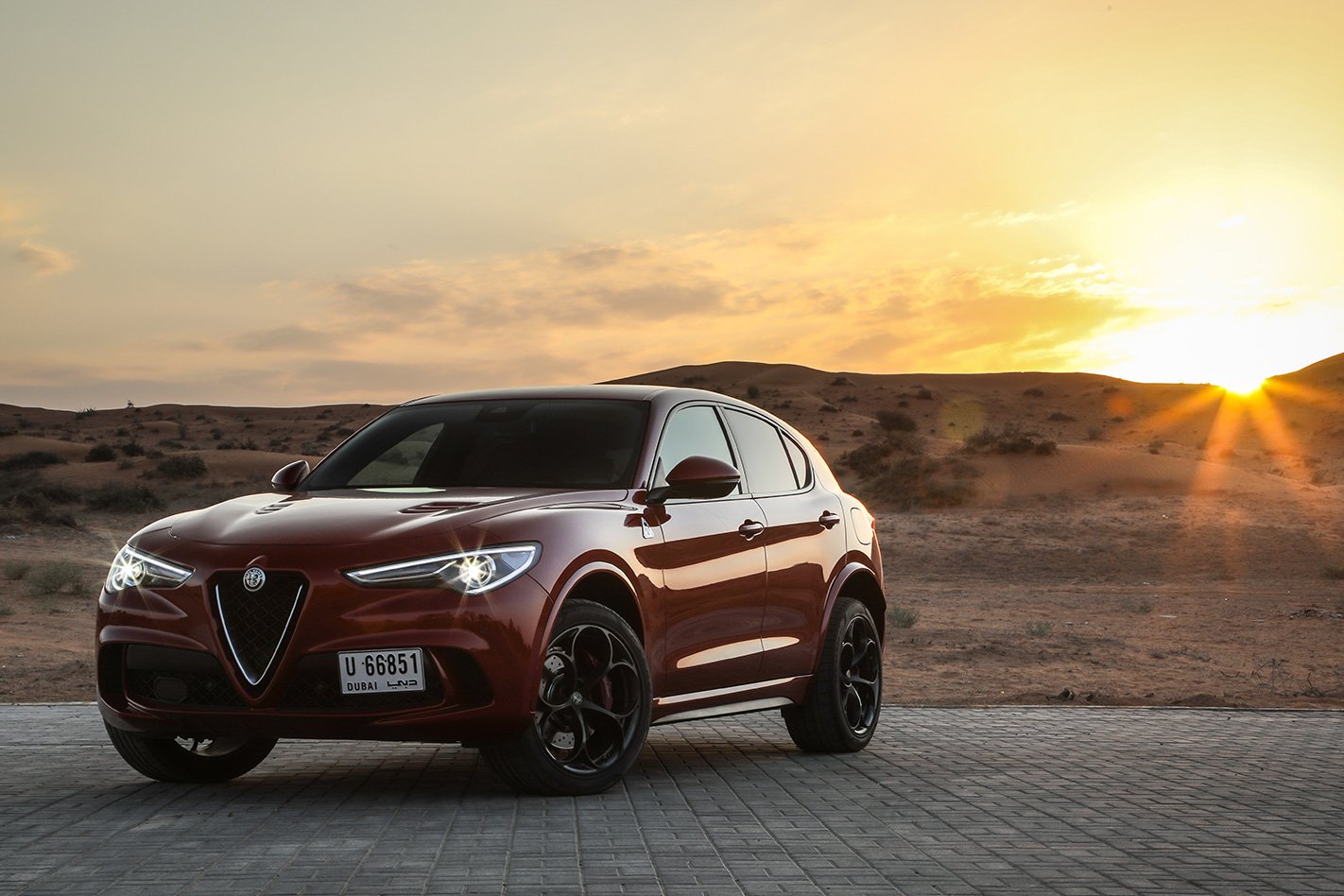
It’s also the only sound I hope to be hearing from this point on.

